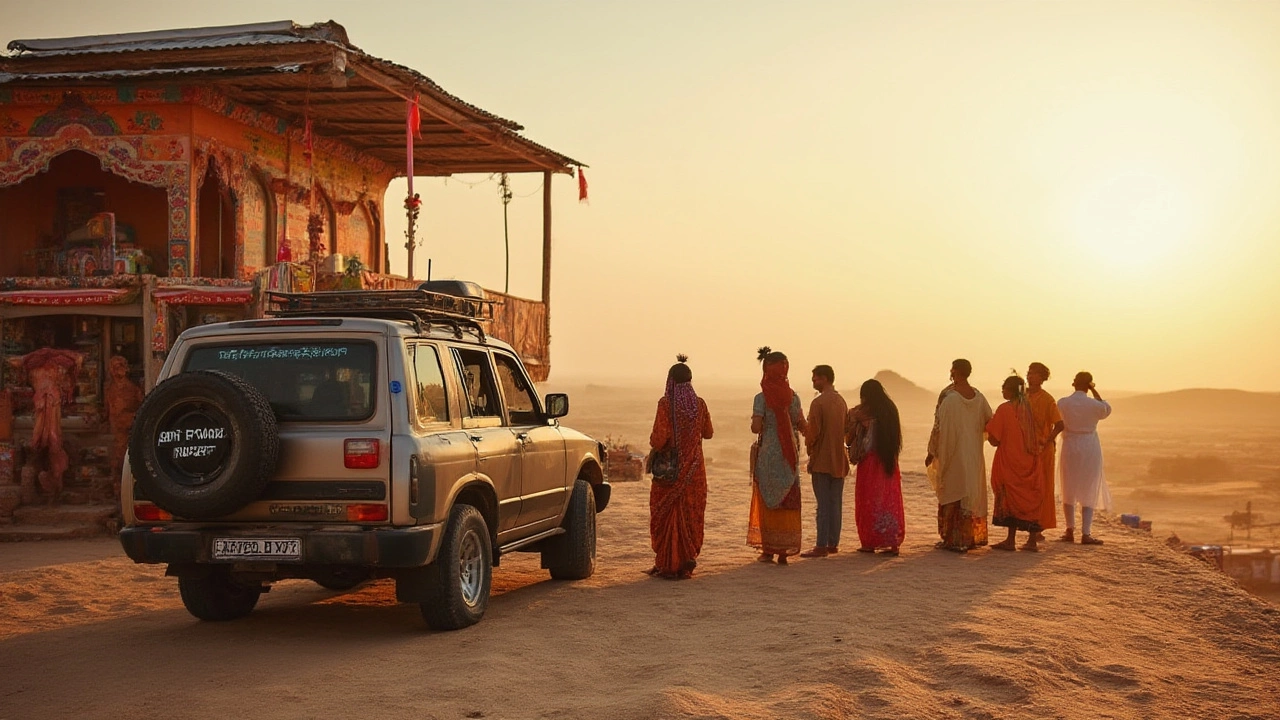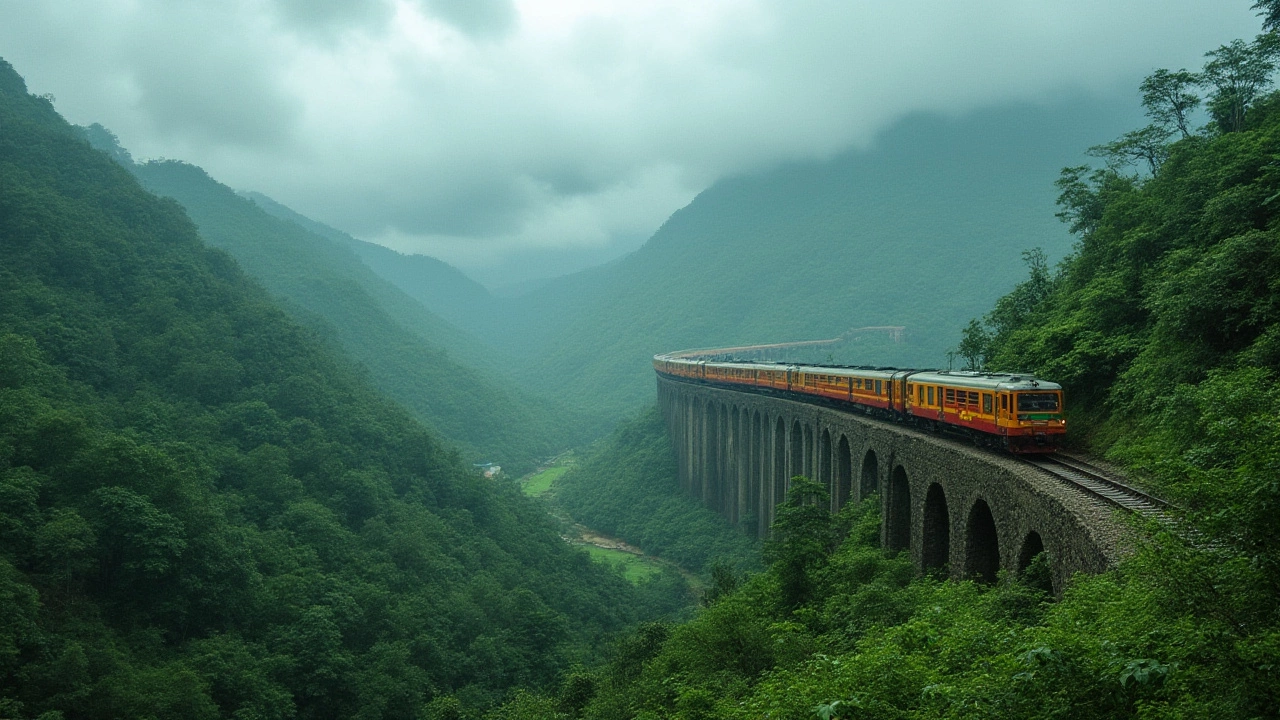Ever wondered what it’s like to travel the absolute longest and most epic route in India? We’re not talking about your usual Goa holiday or the golden triangle. The largest trip in India stretches across several time zones, blurs state boundaries, and throws you into a whirlwind of landscapes, languages, and cultures. There’s no single, official ‘largest trip’—but if you want the most miles, wildest logistics, and an experience that leaves you gutted and grateful, you start looking at extremes. Let’s pull back the curtain and get into the sheer scale of journeying across India.
The Mammoth Scale of Indian Travel: Crossing the Subcontinent
India’s geographical scale is easy to underestimate. From the snow-laden mountains of Leh in Ladakh to the palm-dotted shores of Kanyakumari, the most southern tip of mainland India, the expanse feels almost ridiculous. The literal straight-line distance north-to-south—Leh to Kanyakumari—is over 3,700 km. That’s about the same as traveling from Bristol to Istanbul and back. Add the wild east-to-west stretch—from Gujarat’s Dwarka to Arunachal Pradesh’s Kibithu—and you’re asking for a real odyssey.
The Guinness World Record for longest rail journey in India—for a single train—is held by the Vivek Express, which shuttles from Dibrugarh (Assam) to Kanyakumari (Tamil Nadu). This journey covers 4,273 km and takes about 82 hours. That’s almost three-and-a-half days chugging through rice paddies, desert, bustle, and mountains. If you want to see India’s full spectrum, this is the closest thing to peering behind every curtain. You pass through 8 states, switch time zones, and chew up your data plan staring out the window, identifying where the landscape flips from lush forest to sunburned plain.
But the train is just a slice. Hardcore road trippers can attempt the famed Leh to Kanyakumari road route—often taken by bikers and driving clubs. This route crosses a little over 3,600 km of road, hacking through U.P. traffic, Rajasthan desert heat, and the green roll of Kerala. You can’t rush it—breakdown or monsoon floods will flatten your plans fast. The average biker takes 9-12 days, assuming no calamities. Records stand at under 4 days, but that’s with relays and non-stop driving. For real travelers, it’s about slowing down, meeting people, swapping languages, scarfing down local food and seeing the country mutate under your wheels.
Legendary Train Journeys: The Vivek Express and Beyond
If someone asks, what is the largest trip in India—the longest single stretch you can buy a ticket for—the Vivek Express tops every list. This isn’t your cozy Rajdhani with air-conditioned bliss and gourmet food. This is real, dirt-under-your-fingernails India on rails. The train has 59 scheduled stops, often waiting out cattle traffic or surprise weather storms. It covers ground so varied that you’ll wipe sleep from your eyes and find yourself in a landscape that feels like a different country. Snarling city chaos gives way to endless tea gardens or sun-faded fields. You see both the best and worst of Indian train service: friendly chai sellers, impromptu card games with strangers, unpredictable food, and toilets that are little adventures by themselves.
Here’s the kicker—thousands take this journey not for tourism, but for family obligations, education, and work. That means your compartment is loaded with stories if you’re the chatty type. If you’re a planner, book AC 2-tier to avoid the worst crowds. If you want authenticity (and you don’t mind toughing it out), sleeper class is raw and real.
The Vivek isn’t the only option. The Himsagar Express (from Jammu to Kanyakumari) gives you a north-south epic, while the Ten Jammu Express (Kanyakumari to Jammu) clocks nearly 4,000 km. Pick your train, pack cheap snacks—samose, bananas, bottles of water—and don’t even think about fasting the whole way. There are folks who attempt all these journeys in one go, making it a personal challenge. If you’re crazy enough, you could stitch together rail passes and ride India end to end in a series of gigantic hops, never leaving the railway system for weeks.

Hit the Road: India’s Biggest Road Trips
Feeling caged by timetables? Then the road trip is your canvas. The Leh to Kanyakumari drive is the monster, not just for distance, but for sheer environmental whiplash. In the first day, you can have frozen diesel in Ladakh, thin air and treacherous bends. Before you know it, you’re elbowing speeding trucks on the Delhi-Agra road, then roasting on the flyover in Hyderabad, only to meet coconut skullers in the muggy south.
The best part is the unpredictability. Google Maps might say it’s possible to breeze through, but throw in road works, random processions, or maybe a herd of buffaloes blocking the highway, and you’re adding bonus hours. Yet, that’s what builds stories you trade over masala chai or campfires. On a shoestring? Buses run the same routes, though with endless stops and questionable playlists. Shared cabs and SUVs are how locals survive distances in India, but if you want freedom—hire a car or grab a Royal Enfield and ride. Don’t forget your driving license, extra cash for tolls, and a crash course in horn etiquette.
What about the east-west axis? Try the 3,100 km march from Dwarka (Gujarat) to Arunachal’s Kibithu. You’ll pass through deserts, the heartland of northern India, tea country, and then wander into the wilds of Northeast India, where cell service and paved roads become dreams. Northeast journeys bring unique challenges: forest checkposts, curfews, and language zigzags you won’t get elsewhere. Restarted in 2023, the India government’s trans-country road initiatives have made the journey less wild than in the past, but it’s still a badge of honor for real explorers.
Travel Tips and Hidden Stories from the Biggest Routes
Don’t just look at Google’s distance calculator. The biggest trip in India is about how deeply you dive into local culture, how much you’re willing to be changed. For long-haul journeys, pack light—carry a change of clothes, basic toiletries, and a local SIM card. Keep digital and paper copies of your IDs. Safety is key: call family often, share your live location if you can. Women travelers should look up coach reservations for women and check for local female driving clubs if going by road.
Most of the largest trips cut across language zones. Watch for the transition: Hindi and English in the north give way to Bengali in the east, Kannada and Tamil in the south, and sometimes tribal dialects in the Northeast. A little phrasebook (or even Google Translate) saves you from awkward charades at the roadside dhaba. This country is food-mad, so leave diet rules at the door. You’ll go from Rajma chawal to dosa to fish curry, so try everything once. Also, train toilets and highway stops can be dicey. Bring hand sanitizer and wet wipes—thank me later!
Sleeping arrangements? Most long-distance trains and buses offer basic berths, but don’t expect luxury unless you’re on a high-end service. On the road, highway motels—called dhabas—sometimes double as safe, (reasonably) clean places for a nap. Book ahead for the big cities, especially in the tourist season.
Finally, talk to people. The stories you’ll gather on India’s largest road or rail trips are the real treasures, from school kids traveling to distant relatives, to truck drivers hauling goods from one border to the other. Plenty of groups on social media track these journeys—join up, ask for help, and you might just score a free meal or a vital road tip.
The largest trip of India isn’t just about ticking off miles. It’s about embracing the chaos, surrendering to the rhythm, and letting the country work its magic on head, heart, and stomach. The sheer size? Mind-boggling. The memories? Unforgettable. Once you’ve done it, no trip ever feels the same again.
